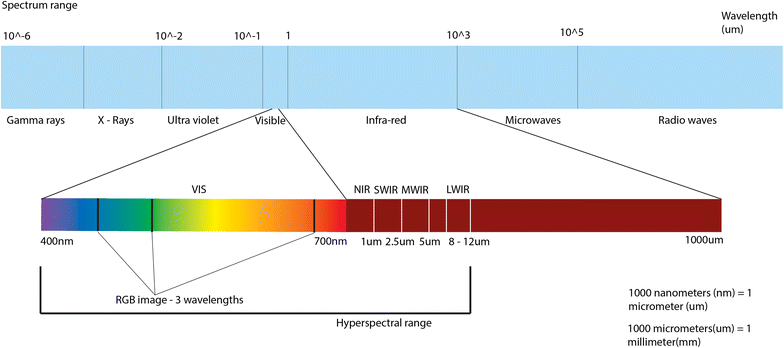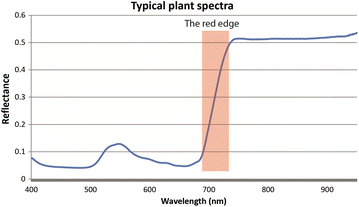Hyperspectral image analysis techniques for the detection and classification of the early onset of plant disease and stress
- PMID: 29051772
- PMCID: PMC5634902
- DOI: 10.1186/s13007-017-0233-z
Hyperspectral image analysis techniques for the detection and classification of the early onset of plant disease and stress
Abstract
This review explores how imaging techniques are being developed with a focus on deployment for crop monitoring methods. Imaging applications are discussed in relation to both field and glasshouse-based plants, and techniques are sectioned into 'healthy and diseased plant classification' with an emphasis on classification accuracy, early detection of stress, and disease severity. A central focus of the review is the use of hyperspectral imaging and how this is being utilised to find additional information about plant health, and the ability to predict onset of disease. A summary of techniques used to detect biotic and abiotic stress in plants is presented, including the level of accuracy associated with each method.
Keywords: Early detection of stress; Hyperspectral image analysis; Hyperspectral imaging; Image analysis techniques; Plant disease and stress; Vegetation Indices.
Figures
References
-
- Gardner MW, Dorling SR. Artificial neural networks (the multilayer perceptron)—a review of applications in the atmospheric sciences. Atmos Environ. 1998;32:2627–2636. doi: 10.1016/S1352-2310(97)00447-0. - DOI
-
- Yuhas RH, Goetz AF, Boardman JW. Discrimination among semi-arid landscape endmembers using the spectral angle mapper (SAM) algorithm. In: Summaries of the third annual JPL airborne geoscience workshop [Internet]. Pasadena, CA: JPL Publication; 1992 [cited 2015 Nov 3]. p. 147–9. http://ntrs.nasa.gov/archive/nasa/casi.ntrs.nasa.gov/19940012238.pdf.
-
- Du Y, Chang C-I, Ren H, Chang C-C, Jensen JO, D’Amico FM. New hyperspectral discrimination measure for spectral characterization. Opt Eng. 2004;43:1777–1786. doi: 10.1117/1.1805563. - DOI
-
- Savary S, Ficke A, Aubertot J-N, Hollier C. Crop losses due to diseases and their implications for global food production losses and food security. Food Secur. 2012;4:519–537. doi: 10.1007/s12571-012-0200-5. - DOI
-
- Oerke E-C. Crop losses to pests. J Agric Sci. 2006;144:31–43. doi: 10.1017/S0021859605005708. - DOI
Publication types
LinkOut - more resources
Full Text Sources
Other Literature Sources



